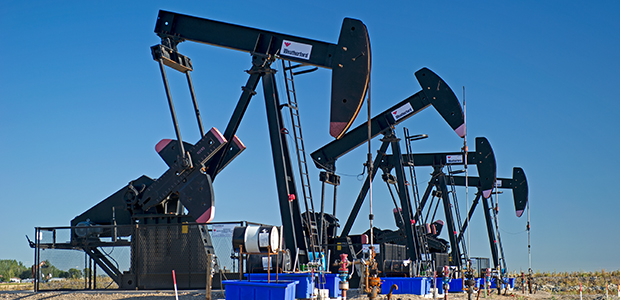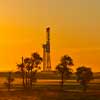
North America Holds Vast Oil and Gas Reserves
WASHINGTON, D.C.—At its current rate of consumption, the United States has 227 years of technically recoverable oil, according to the Institute for Energy Research’s latest North America Energy Inventory. For natural gas, the technically recoverable reserves would provide 130 years of supply, IER adds.
Those numbers reflect tremendous growth since IER first published its first North American Energy Inventory in 2011, the institute notes. At 1,657.5 billion barrels, its estimate for technically recoverable oil is 15% higher than in 2011. For gas, the estimate now stands at 4,032 trillion cubic feet, 47% higher.
“In 2011, the United States was the third largest oil producer behind Russia and Saudi Arabia and conventional wisdom held that we were running out of oil, natural gas and even coal,” IER recalls. “At the time, then-President Obama echoed this sentiment in numerous speeches when he claimed that because the United States only had 2% or 3% of the world’s oil reserves, we couldn’t ‘simply drill our way out of our energy problems.’
“President Obama, it seems, did not understand what is really meant by the term ‘oil reserves.’ In reality, “oil reserves” represent only a fraction of the total oil resources available. Consequently, we successfully addressed many of our energy challenges by tapping into this broader pool of resources,” IER says. “Put another way, we did drill our way to energy security and more stable prices.”
Since 2005, domestic oil production has grown 149% and natural gas production has doubled, IER calculates. “These massive increases, which have catapulted the U.S. to the world’s top producer of both oil and natural gas, were the result of a combination of hydraulic fracturing, precision drilling, and private ownership of the subsurface in key parts of the United States,” the institute argues.
The United States is unusual in that landowners generally control both the surface and mineral estate, IER notes. “Private ownership of mineral rights means that oil and gas production is more controlled by people making market decisions rather than political decisions,” it says. In contrast, “government control of resources leads to more decisions being made by political actors.”
If federal lands are any indication, such actors discourage production. “The federal government owns 61% of the U.S. onshore and offshore mineral estate, but only 25% of the nation’s oil and 11% of our natural gas comes from those federal lands and waters. And that number is declining,” IER says.
Canadian Reserves
Like the United States, Canada has benefited from technological advances. “Estimates of Canada’s technically recoverable natural gas resources have increased by 80% since 2011, and proved natural gas reserves are 40% higher,” IER illustrates.
This progress means that Canada, the United States’ largest source of oil imports, “has four times as much proved oil reserves as the United States, mostly composed of oil sands, and has the fourth-largest global quantity of oil reserves after Venezuela, Saudi Arabia, and Iran.”
“Canada’s natural gas market is heavily integrated with the United States largely because of the location of supply basins, demand centers, availability of transportation infrastructure, and existing Canada-U.S. trade agreements,” IER adds. “These factors allow for consumers and distributors on either side of the border to freely access natural gas from the lowest cost supplier.”
A Cautionary Tale
In contrast to the United States and Canada, Mexico’s reserves have declined. “In IER’s 2011 inventory, Mexico was estimated to possess 10.5 billion barrels in proved oil reserves. Today, that figure has dwindled to 6.0 billion barrels,” the institute says. “Additionally, Mexico’s recoverable natural gas reserves have declined from 12 trillion cubic feet in 2011 to the current 11 trillion cubic feet.”
The institute attributes the decline primarily to the López Obrador administration’s decision to roll back the 2013 reforms by the Enrique Peña Nieto administration and restore Pemex’ near monopoly.
For IER, the United States’ success at discovering and producing domestic hydrocarbons suggests that energy policies should be crafted with humility. “If someone had asked us in 2011, ‘what would it take for the United States to become the largest oil and natural gas producer in the world?’ we would probably have guessed it would be a combination of a dramatic increase in offshore drilling, opening more of Alaska’s onshore and offshore resources and technological advancements with methane hydrates and oil shale (kerogen). None of these things happened,” IER reflects. “Instead, we got an energy revolution largely from technological advances—specifically hydraulic fracturing, directional drilling and associated technologies—combined with our unique system of private property rights.
“In the 2011 inventory, we noted that hydraulic fracturing and directional drilling were responsible for huge increases in estimates of recoverable oil and natural gas, but we did not necessarily see the even bigger increases to come,” IER continues. “The point we would make today is that we do not know what our energy future holds. However, we know it can be bright if people have access to our energy resources without excessive government intervention. We have enough affordable, reliable energy to last for generations so long as we have continued access to these energy resources.”
The full report provides more details on oil, natural gas and coal reserves in the United States, Canada and Mexico, as well as an overview of the economic, environmental and geopolitical benefits associated with the United States’ emergence as the world’s top producer of both oil and gas. To read it, see 2024 North American Energy Inventory.
For other great articles about exploration, drilling, completions and production, subscribe to The American Oil & Gas Reporter and bookmark www.aogr.com.













